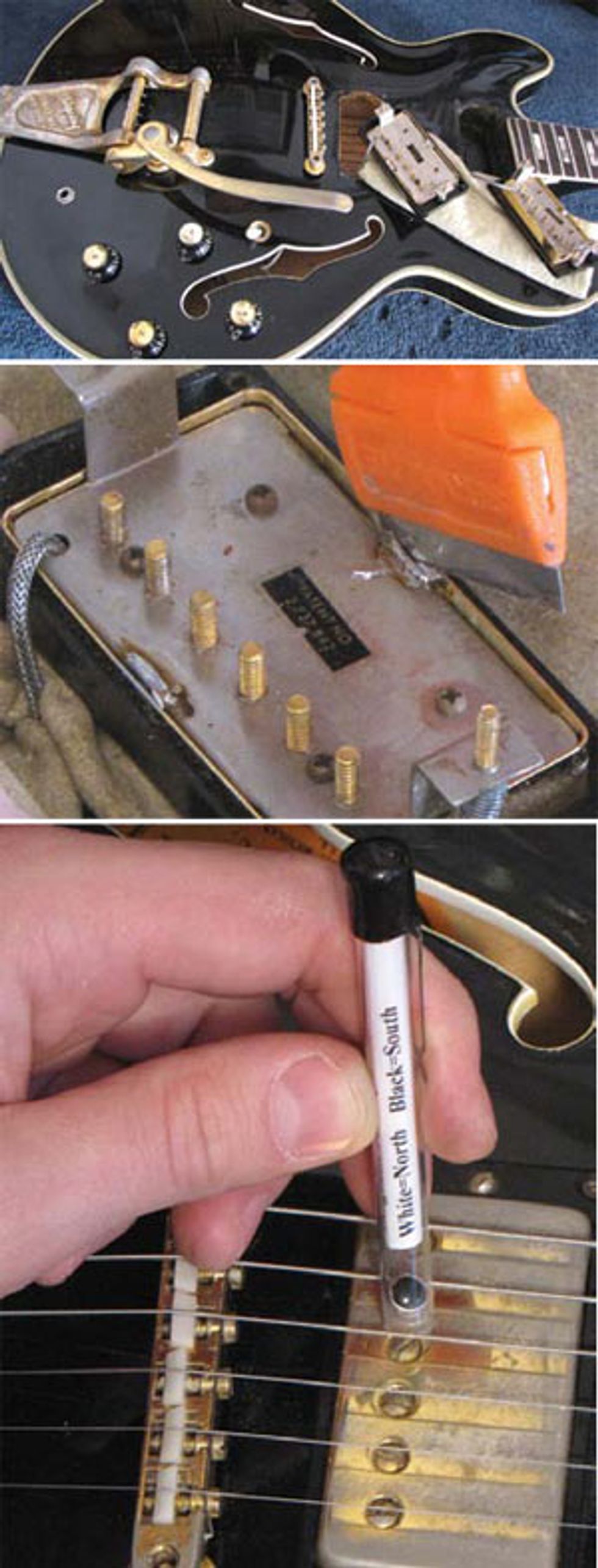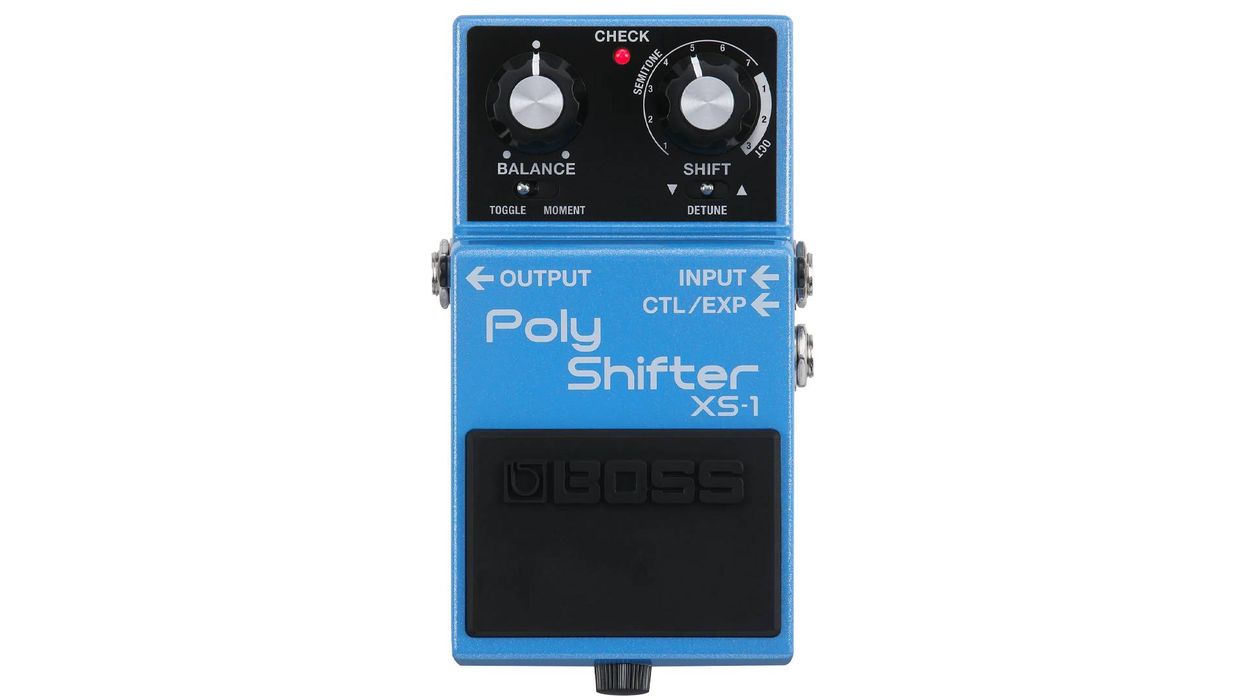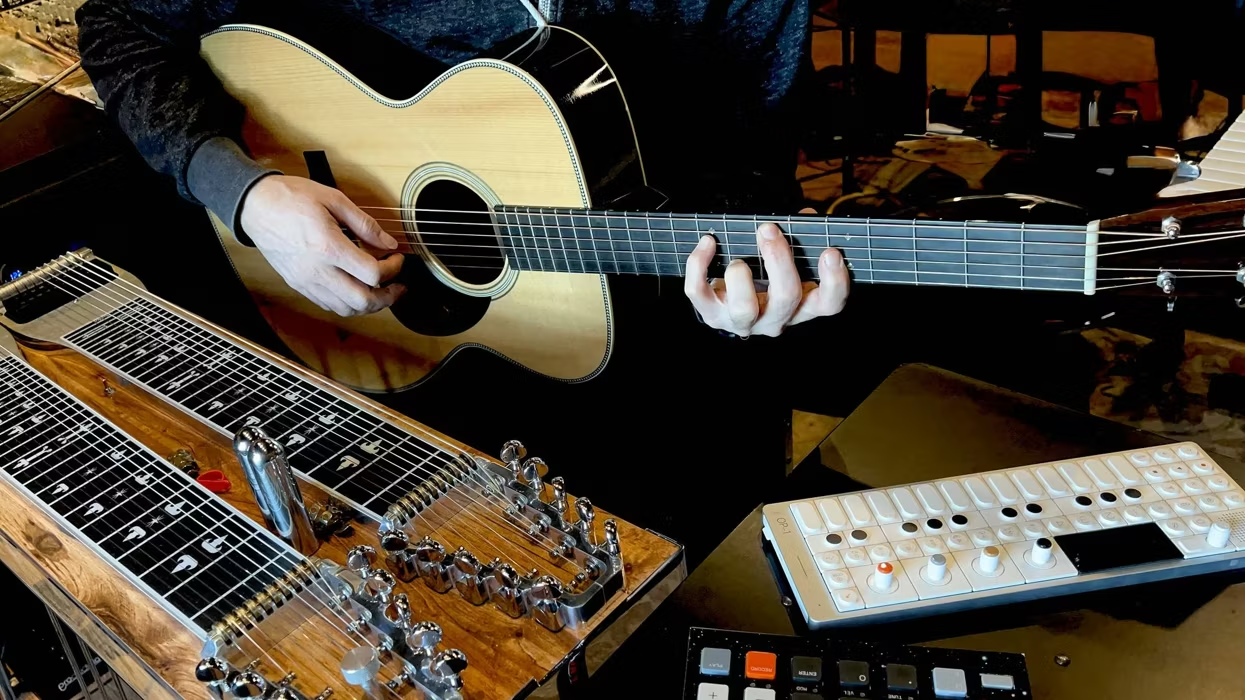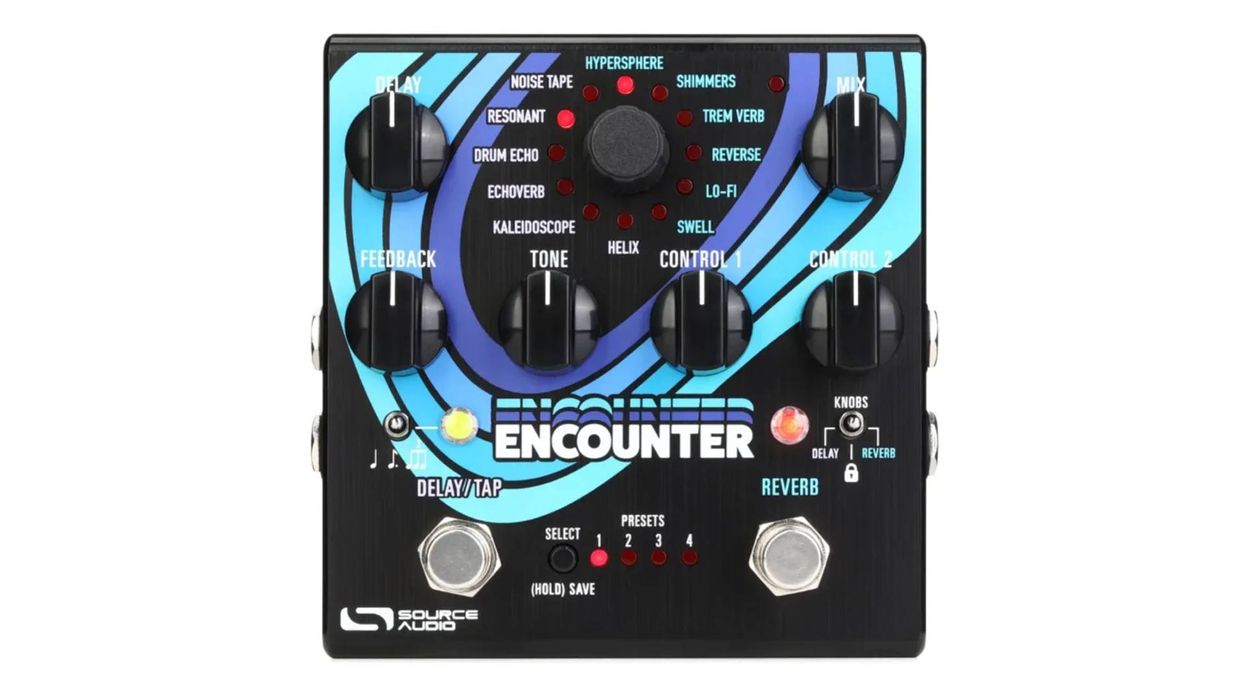I had this beautiful 1966 Black Gibson ES 335TD in my hands and playing through my 50-watt Straub Cantus. Individually the neck pickup and bridge pickup really sound fantastic, but together they sound very tubular, out of phase—a non-factory modification. Before placing the guitar on the bench, I first admired the gracefully-aged gold-plating, ABR-1 bridge with nylon saddles, Bigsby tremolo, small block fingerboard inlays, and the body binding under its nitrocellulose vintage clear finish. The feel of the neck and overall weight of this guitar is true perfection. I find that every guitar has its own personality and fingerprint, and two instruments of the same model can vary at times from slightly to greatly. After I solve the out-of-phase tubular sound effect, we will not only have an exquisite collector piece but also a wonderful-sounding guitar, as Gibson intended it to be when it left the factory in 1966.
Visual Diagnostics 
There it was, clear as a bell: the solder joints on the bridge pickup had been altered. It no longer had the plump, medium-sized solder beads but rather thin, convex solder strands branching out across the faceplate. I could tell that the neck pickup cover was never removed from factory, so the game plan was to look deeper into the bridge pickup and solve what had been altered and put everything back to original.
Exploratory Surgery
There are a few ways to remove the pickup cover. Some simply use a soldering iron to soften up the bead. My favorite choice is cutting through the solder joint between the baseplate and cover using a razor blade, rocking with a back and forth motion. This avoids excess heat during the cover removal. When using a razor blade to cut through the solder, make sure that the blade is up against the inner wall of the pickup cover so that when you separate the cover from the baseplate, you won’t have any over hang of solder to possibly damage the windings. Once the cover was removed, I was ready to explore and correct the alterations. After removing the outer layer of black pickup coil tape, I could tell that the lead wires had never been tampered with. I had initially thought that the pickup was wired out of phase. Not the case! Was the rectangle-shaped alnico V magnet positioned incorrectly? In the early years of the PAF, Gibson used Alnico II, III and V magnets, but it seems they used the Alnico V most consistently after 1961.
The magnet polarity needs to read south on the adjustable coil side of the pickup. My magnet polarity tester (Stew Mac #5127) confirmed that the magnet was not sitting correctly, as it read north. Perhaps this was changed during the experimental ‘80s to get that out-of-phase, “funkified” sound. The neck pickup DC resistance read 7.3k ohms and the bridge pickup 7.7k ohms, leading us to believe that these pickups were wound using a manually run winding system. The machine operator did a wonderful job of deciding when these pickups had had about enough windings, as the two pickups in their positions complement each other very well. Gibson’s fully automated system had perhaps not yet been implemented, as the pickups did not consistently measure 7.5k ohms with 5000 turns of 42 gauge plain enamel wire.
I loosened the four bobbin mounting screws on the polepiece slug and the polepiece adjustable screw side, and was able to slip out the rectangle-shaped alnico V magnet and turn it around correctly so that the magnetic polarity now read south over the adjustable coil side of the pickup. The bobbin mounting screws were retightened while making sure that the maple shim and magnet stayed in its proper position. Last, I laid the original outer pickup coil tape back down perfectly and placed two medium-sized solder beads between the baseplate and pickup cover.
As always, thanks for checking out “Restoring An Original.”
John Brown
John Brown, of Brown's Guitar Factory, is the inventor of the Fretted/Less bass. He owns and operates a full guitar manufacturing and repair/restoration facility, which is staffed by a team of talented luthiers. He is also the designer of guitar making/repair tools and accessories that are used today by instrument builders throughout the world.
brownsguitarfactory.com
info@brownsguitarfactory.com










![Rig Rundown: Russian Circles’ Mike Sullivan [2025]](https://www.premierguitar.com/media-library/youtube.jpg?id=62303631&width=1245&height=700&quality=70&coordinates=0%2C0%2C0%2C0)






